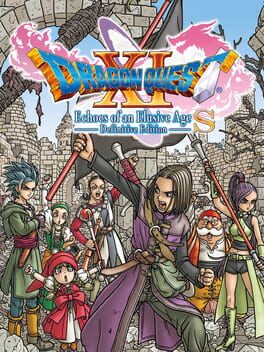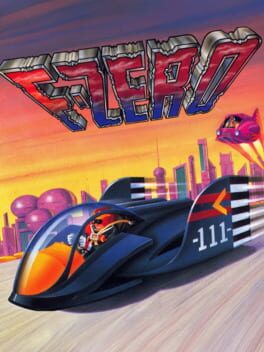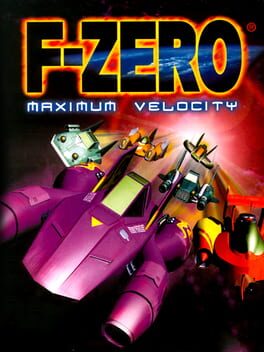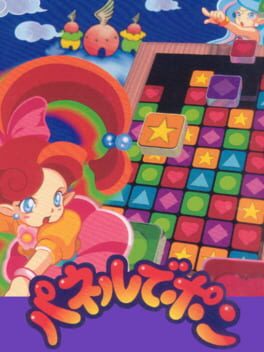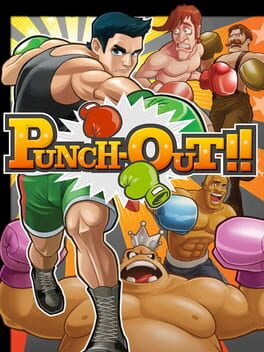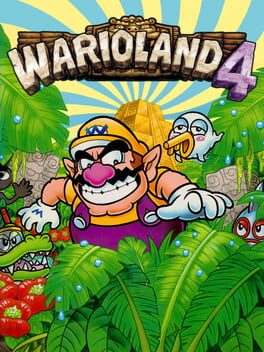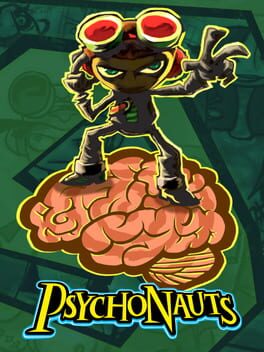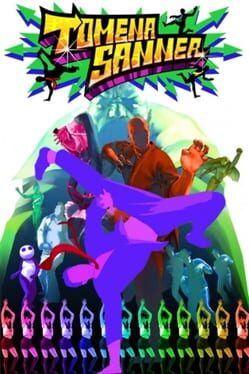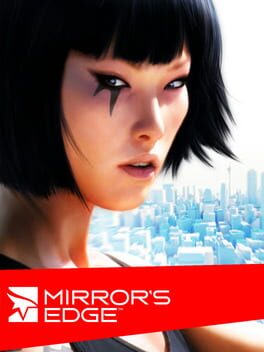The people stand at the trumpets at the very beginning of the Overture, as the king of JRPGs marches through with gallant majesty.
Dragon Quest XIS is an event of an adventure to live on. While the likes of Final Fantasy might take you to a night in the opera, these have the full whimsy of a storybook that is only rivaled by the likes of Disney or even Eiichiro Oda.
Echoes of an Elusive Age will delight you with its lovable characters and intriguing stories. Yes, you will be fighting a LOT of monsters along the way, but to be fair these are considered expected features of the series. Series creator and writer Yuji Horii has not lost his touch in over 35 years of work and you may even find some of his familiar touch that was also found in Chrono Trigger.
If you want a classic JRPG for your home console, you cannot go wrong with this one, I guarantee your satisfaction.
Dragon Quest XIS is an event of an adventure to live on. While the likes of Final Fantasy might take you to a night in the opera, these have the full whimsy of a storybook that is only rivaled by the likes of Disney or even Eiichiro Oda.
Echoes of an Elusive Age will delight you with its lovable characters and intriguing stories. Yes, you will be fighting a LOT of monsters along the way, but to be fair these are considered expected features of the series. Series creator and writer Yuji Horii has not lost his touch in over 35 years of work and you may even find some of his familiar touch that was also found in Chrono Trigger.
If you want a classic JRPG for your home console, you cannot go wrong with this one, I guarantee your satisfaction.
1990
When Nintendo was releasing their brand new 16-bit behemoth they were already facing tough competition with SEGA's Genesis (or Mega Drive if you were not in North America). Nintendo of course had their mustached champion ready to spearhead the launch, but our fluffy friend was accompanied by a daring death-racer from outer space.
F-ZERO is a solid tech demo for the early SNES, it showed all of their rendering tricks including the now well-known "Mode 7" that would be one of the console's gimmicks to give an illusion of perspective over a flat surface, it turns out this one trick makes a pretty good job with racing games.
While F-ZERO is a challenging racing game with nice bells and whistles, these days it can leave you with much to be desired, one of those is a sore absence of a 2-player mode, leaving only the options to do 1-player races, time trials, and check your records.
While it may have received its round of applause in 1991, F-ZERO could have been far more, but it still delivers what it promised.
F-ZERO is a solid tech demo for the early SNES, it showed all of their rendering tricks including the now well-known "Mode 7" that would be one of the console's gimmicks to give an illusion of perspective over a flat surface, it turns out this one trick makes a pretty good job with racing games.
While F-ZERO is a challenging racing game with nice bells and whistles, these days it can leave you with much to be desired, one of those is a sore absence of a 2-player mode, leaving only the options to do 1-player races, time trials, and check your records.
While it may have received its round of applause in 1991, F-ZERO could have been far more, but it still delivers what it promised.
At the launch of the GameBoy Advance the general promise was "hey, like the SNES but portable!", of course F-ZERO was not going to be out from the party.
Maximum Velocity is not just similar to its predecessor, it is also somewhat better with finer graphics and designs, not to mention a slick Y2K presentation; all that and add a 4-player feature which already raises the bar from what it attempts to emulate.
And at the end of it all... it still feels like... something is missing. It is a good game, but it somewhat feels like it vastly pales in presentation compared to F-ZERO X; while it may sound like an absurdly unfair comparison on the surface, the vehicles on Maximum Velocity lack virtually any character whatsoever, which might be an odd side effect from imitating the SNES release.
All considered, this is still a very solid game worth your time, especially if you are a fan of the handheld.
Maximum Velocity is not just similar to its predecessor, it is also somewhat better with finer graphics and designs, not to mention a slick Y2K presentation; all that and add a 4-player feature which already raises the bar from what it attempts to emulate.
And at the end of it all... it still feels like... something is missing. It is a good game, but it somewhat feels like it vastly pales in presentation compared to F-ZERO X; while it may sound like an absurdly unfair comparison on the surface, the vehicles on Maximum Velocity lack virtually any character whatsoever, which might be an odd side effect from imitating the SNES release.
All considered, this is still a very solid game worth your time, especially if you are a fan of the handheld.
1995
Infamously localized in North America as "Tetris Attack" with a Yoshi sticker slapped on top, Panel de Pon is a delightful challenging puzzle game that will have your socks blown regardless of its shōjo appearance.
A rocking soundtrack accompanied by a blood-pumping gameplay makes this one hard to put down, you will eagerly want to pull larger combos to devastate your opponent, be it a human or a computer.
A fair candidate for best puzzle game on the SNES.
A rocking soundtrack accompanied by a blood-pumping gameplay makes this one hard to put down, you will eagerly want to pull larger combos to devastate your opponent, be it a human or a computer.
A fair candidate for best puzzle game on the SNES.
2009
The dormant series made a grand return to Nintendo Wii with shining features. Not only did Little Mac get a fancy revamped presentation in full animation, but even the caricatures became curiously more tasteful, each character accurately speaking on their native language.
On top of it all, the optional motion controls are actually pretty stellar, they are properly responsive and doing a run for the champion belt make a very fun workout.
Do not overlook this one, fun is guaranteed.
On top of it all, the optional motion controls are actually pretty stellar, they are properly responsive and doing a run for the champion belt make a very fun workout.
Do not overlook this one, fun is guaranteed.
1991
Shortly after the original release of SimCity on personal computers in 1989, Nintendo quickly contacted Maxis to acquire a license to create a port for their upcoming 16-bit console. The result is a charming amusement that carries a scent of optimistic Americana from the dawn of the 90s, with a twist of Japanese flavor with the inclusions of mayor assistant Mr. Wright (an obvious nod to Maxis's Will Wright) and the addition of Bowser as a city threatening disaster. From the very title screen to the countless hours you will spend spreading the seeds of your settlements, the soundtrack was composed by Soyo Oka which would also be involved with Super Mario Kart, it is mellow and carries a whiff of romantic optimism that you rarely see these days.
While limited by the SNES's small CPU, SimCity is a declaration of how far the SNES is willing to emulate games that were usually reserved for even more sophisticated systems.
Also, try building rails rather than roads.
While limited by the SNES's small CPU, SimCity is a declaration of how far the SNES is willing to emulate games that were usually reserved for even more sophisticated systems.
Also, try building rails rather than roads.
2001
Wario Land 4 is a strange and ambitious specimen of a game.
Ever since Wario got his own spinoff platformer series "Wario Land", every entry became a series of odd misadventures on getting this oaf to amass an absurd wealth. Wario Land 4 is not different in premise, but it does some heavy lifting on the visual and audio engineering departments.
Breaking a bit of tradition, Wario is once again vulnerable to his enemies like in the first entry, but he still counts with a lot of outrageous power to wield around. The transformations do make a return and do become vital to uncover all the treasure around.
One key difference is the introduction of the Keyzer, an odd narcoleptic ghastly creature that has a key for a nose, that you have to carry back to your home dimension in order to progress further into the ruins you are exploring. I forgot to mention that once you reach the deepest ends of each level, you press a frog switch that works like a self-destruction sequence for the pocket dimension you have landed on -- which I believe it is a nod to Nintendo R&D1's involvement on Metroid games--, so you must return to the vortex where you came from on time, or you can kiss your very existence goodbye. Oh and your money too.
Wario Land 4 is absolutely frantic, crazy, and every other related synonym; and it is a must for your GameBoy Advance experience.
Ever since Wario got his own spinoff platformer series "Wario Land", every entry became a series of odd misadventures on getting this oaf to amass an absurd wealth. Wario Land 4 is not different in premise, but it does some heavy lifting on the visual and audio engineering departments.
Breaking a bit of tradition, Wario is once again vulnerable to his enemies like in the first entry, but he still counts with a lot of outrageous power to wield around. The transformations do make a return and do become vital to uncover all the treasure around.
One key difference is the introduction of the Keyzer, an odd narcoleptic ghastly creature that has a key for a nose, that you have to carry back to your home dimension in order to progress further into the ruins you are exploring. I forgot to mention that once you reach the deepest ends of each level, you press a frog switch that works like a self-destruction sequence for the pocket dimension you have landed on -- which I believe it is a nod to Nintendo R&D1's involvement on Metroid games--, so you must return to the vortex where you came from on time, or you can kiss your very existence goodbye. Oh and your money too.
Wario Land 4 is absolutely frantic, crazy, and every other related synonym; and it is a must for your GameBoy Advance experience.
2002
Jet Set Radio Future is neither a sequel nor a remake, it is more accurately described as a "reimagining", like SmileBit thought "okay let's say that the Dreamcast game we released a few years ago never existed and we come up with this parallel universe kind of alternative instead".
JSRF is a vast improvement from its predecessor in many areas, it has an even slicker visual design, even more delicious ear candy, and a revised control scheme that makes this all a far more tolerable experience. And yet, it still has a few rough spots on the surface that still make it far from perfect. There is this recurring problem in the game that you can easily lose momentum and you have to regain it by winding back, and the spraycan system is not really helping much still. In retrospective, I realized this game would actually benefit a lot more if it had more friction as you are accelerating.
All that said and done, JSRF is still one shining gem of the XBOX, and it would be foolish from me to say you shouldn't get it.
Fly like a butterfly.
JSRF is a vast improvement from its predecessor in many areas, it has an even slicker visual design, even more delicious ear candy, and a revised control scheme that makes this all a far more tolerable experience. And yet, it still has a few rough spots on the surface that still make it far from perfect. There is this recurring problem in the game that you can easily lose momentum and you have to regain it by winding back, and the spraycan system is not really helping much still. In retrospective, I realized this game would actually benefit a lot more if it had more friction as you are accelerating.
All that said and done, JSRF is still one shining gem of the XBOX, and it would be foolish from me to say you shouldn't get it.
Fly like a butterfly.
2005
I believe it is more than fair to consider Psychonauts is now a definite cult classic.
Lucasfilm Games comedic veteran Tim Schafer launched his own company Double Fine back in 2000 and this game was immediately in the production pipeline, originally under the back of Microsoft out of all publishers, alas that would abruptly change amidst development.
Psychonauts is an outrageously creative platforming game that takes few inspirational cues from Rayman 2: The Great Escape, all while still being entirely it's own mindblasting specimen. You take the role of Razputin (Raz for short) who is a child circus acrobat with telekinetic powers that escapes his life on the road to be tutored further on his psychic powers in a designated summer camp for prodigious children like him, and is managed by special international secret agents. If that was not already weird enough, you are trained in the ways of the "Psychonaut", a specialist that can access the surreal and abstract mental worlds of other people to unlock their deepest secrets and reasoning for their erratic behavior.
The platforming controls are pretty solid and over time it unlocks more tools to make your journeys from point A to point B faster and more fun, and be it keyboard or controller it is a good ride to jump into.
Psychonauts may be a 3D platformer at most, but it still carries plenty of the DNA from Lucasfilm/LucasArts point-n-click adventures, the game has a lot of dialog on each character and they can give you different answers depending on the kinds of questions you make and even the actions you perform around or onto them. All this and considering the writing is nothing short of phenomenal.
Psychonauts always deserved far better attention and sales from its launch in 2005, and if anything I believe it has solidified its reputation these days especially with the starry sequel it finally got just 2 years ago.
You definitely must play this one.
Lucasfilm Games comedic veteran Tim Schafer launched his own company Double Fine back in 2000 and this game was immediately in the production pipeline, originally under the back of Microsoft out of all publishers, alas that would abruptly change amidst development.
Psychonauts is an outrageously creative platforming game that takes few inspirational cues from Rayman 2: The Great Escape, all while still being entirely it's own mindblasting specimen. You take the role of Razputin (Raz for short) who is a child circus acrobat with telekinetic powers that escapes his life on the road to be tutored further on his psychic powers in a designated summer camp for prodigious children like him, and is managed by special international secret agents. If that was not already weird enough, you are trained in the ways of the "Psychonaut", a specialist that can access the surreal and abstract mental worlds of other people to unlock their deepest secrets and reasoning for their erratic behavior.
The platforming controls are pretty solid and over time it unlocks more tools to make your journeys from point A to point B faster and more fun, and be it keyboard or controller it is a good ride to jump into.
Psychonauts may be a 3D platformer at most, but it still carries plenty of the DNA from Lucasfilm/LucasArts point-n-click adventures, the game has a lot of dialog on each character and they can give you different answers depending on the kinds of questions you make and even the actions you perform around or onto them. All this and considering the writing is nothing short of phenomenal.
Psychonauts always deserved far better attention and sales from its launch in 2005, and if anything I believe it has solidified its reputation these days especially with the starry sequel it finally got just 2 years ago.
You definitely must play this one.
2017
If imitation is the highest form of flattery, Super Metroid might be one of the most flattered games by the indie game developing community. You tend to see one of these at least a couple of times a year. The case of Hollow Knight to me feels like something particularly special.
Hollow Knight is a curious blend of flavors. The world underneath the surface is dark, hostile, and overall dead; and yet there are still a few lingering souls that have decided to stay for different reasons. As you explore you learn about the ozymandic empire of Hallownest, a once vast and glorious kingdom that fell to devastating ruin.
This maze is full of insect characters of all sorts. The bug designs vary on being either cuddly and adorable to outright hostile and terrifying. This is a place in which a lot of people have lost their reason to keep living, while others are attracted to the spirit of adventure. You will see an entire pantheon of lives as you keep digging, be it prospering, lingering, or gone.
Mechanically, Hollow Knight is often compared to Dark Souls, the creatures can be very punishing, but you are given plenty of room to parry and counter attack, and you also happen to use souls as a form of replenishment for your survival. It can be very punishing, but every advancement you make on the game feels very rewarding, especially as you get to unlock another dark and silent corner of the vast map; overtime you also get very handy upgrades that make you a far more threatening force to be reckoned with; these are some aspects that feel accurately similar to Super Metroid in some regards.
Hollow Knight is suspenseful, enigmatic, melancholic, breathtaking, silly, and overall a fantastic experience. Venture into this world of husks and secrets, you will definitely be engulfed by it.
Hollow Knight is a curious blend of flavors. The world underneath the surface is dark, hostile, and overall dead; and yet there are still a few lingering souls that have decided to stay for different reasons. As you explore you learn about the ozymandic empire of Hallownest, a once vast and glorious kingdom that fell to devastating ruin.
This maze is full of insect characters of all sorts. The bug designs vary on being either cuddly and adorable to outright hostile and terrifying. This is a place in which a lot of people have lost their reason to keep living, while others are attracted to the spirit of adventure. You will see an entire pantheon of lives as you keep digging, be it prospering, lingering, or gone.
Mechanically, Hollow Knight is often compared to Dark Souls, the creatures can be very punishing, but you are given plenty of room to parry and counter attack, and you also happen to use souls as a form of replenishment for your survival. It can be very punishing, but every advancement you make on the game feels very rewarding, especially as you get to unlock another dark and silent corner of the vast map; overtime you also get very handy upgrades that make you a far more threatening force to be reckoned with; these are some aspects that feel accurately similar to Super Metroid in some regards.
Hollow Knight is suspenseful, enigmatic, melancholic, breathtaking, silly, and overall a fantastic experience. Venture into this world of husks and secrets, you will definitely be engulfed by it.
It is not very common that a game's development transcends four different consoles and eventually does live to see the day as a final product.
Kameo: Elements of Power is a game Rare carried over through the years and finally met its fate on the XBOX360 as a launch title. The concept involves you playing as a fairy named Kameo that can transform into different creatures of respective elemental powers such as rocks, plants, ice, and fire.
On paper this is a great concept, unfortunately on execution is very, very rough. The game has a lot of linear map exploration with puzzle solving involving your magical allies. Alas, plenty of the detection can be very buggy, and while I can see the cleverness behind some boss battle mechanisms and dungeon situations, it feels like it needed further user experience revisions to go around, but it's likely Microsoft had run out of patience for this long lingering project and the release of the XBOX360 was just around the corner.
This is one of those cases I can feel the ambitious intentions of the developer, but it just needs more polish. I would say that if you are a hardcore fan of Rare it is at least worth a look, but it is honestly fairly difficult to make a straight upfront recommendation.
Kameo: Elements of Power is a game Rare carried over through the years and finally met its fate on the XBOX360 as a launch title. The concept involves you playing as a fairy named Kameo that can transform into different creatures of respective elemental powers such as rocks, plants, ice, and fire.
On paper this is a great concept, unfortunately on execution is very, very rough. The game has a lot of linear map exploration with puzzle solving involving your magical allies. Alas, plenty of the detection can be very buggy, and while I can see the cleverness behind some boss battle mechanisms and dungeon situations, it feels like it needed further user experience revisions to go around, but it's likely Microsoft had run out of patience for this long lingering project and the release of the XBOX360 was just around the corner.
This is one of those cases I can feel the ambitious intentions of the developer, but it just needs more polish. I would say that if you are a hardcore fan of Rare it is at least worth a look, but it is honestly fairly difficult to make a straight upfront recommendation.
2019
///log.in
Heavily inspired from the Y2K era, Crossniq+ is an unique puzzle game in which the objective is to create crosses out of colored tiles.
At first the game is simple enough to keep juggling up the descending timer as you keep making combos, however once they introduce traps such as locks and disablers, that's when things get sweaty.
With 8 stylish characters on roster, you can play local multiplayer to define who crosses who; or you can even relax in a therapeutic chillout mode at the gallery.
The music is full of banging electronic tunes by DV-i, similar to the European scene of the end of the century, giving you the right minty beats to slide your tiles along with.
Crossniq+ is a tribute to a small period of time many of us are particularly fond of in its style. While I believe it could be much better with more features such as online play, it is a hell of a nice polished little game. It's a very nice pick.
\\\end.transmission
Heavily inspired from the Y2K era, Crossniq+ is an unique puzzle game in which the objective is to create crosses out of colored tiles.
At first the game is simple enough to keep juggling up the descending timer as you keep making combos, however once they introduce traps such as locks and disablers, that's when things get sweaty.
With 8 stylish characters on roster, you can play local multiplayer to define who crosses who; or you can even relax in a therapeutic chillout mode at the gallery.
The music is full of banging electronic tunes by DV-i, similar to the European scene of the end of the century, giving you the right minty beats to slide your tiles along with.
Crossniq+ is a tribute to a small period of time many of us are particularly fond of in its style. While I believe it could be much better with more features such as online play, it is a hell of a nice polished little game. It's a very nice pick.
\\\end.transmission
2009
From its title to its gameplay, Tomena Sanner is utter absolute amusing nonsense.
Developed by Konami, this is a single-button arcade game about a salaryman dashing to his goal before time runs out, and of course Murphy's Law will defy you by any means necessary, from mundane random bystanders to wild animals and sumo wrestlers.
This is a very simple game that requires only good timing and good sense of humor.
Developed by Konami, this is a single-button arcade game about a salaryman dashing to his goal before time runs out, and of course Murphy's Law will defy you by any means necessary, from mundane random bystanders to wild animals and sumo wrestlers.
This is a very simple game that requires only good timing and good sense of humor.
1996
In 1996 videogames changed forever. Nintendo EAD released the long anticipated Super Mario 64, a game that would become the bedstone of many future titles.
Much like how the Famicom was mainly engineered to be able to run a home edition of the Donkey Kong arcade game, the Nintendo64 was significantly tailor-made to run Super Mario 64, the development team made sure to add as many details and personality to it as they could. Mario is not just able to jump and run; he can also swim, dive, fly, traverse, sneak, crawl, somersault, scream, and even sleep.
While Super Mario 64 is hardly the first 3D game ever, it was notorious for its ambition, polish, and milestones such as including and elaborate free-roaming map design that would give the groundwork for the "sandbox" style, and an item collecting format that would bring many future imitators.
Few games become structural pillars of popular culture as this one, and is definitely one for the ages.
Much like how the Famicom was mainly engineered to be able to run a home edition of the Donkey Kong arcade game, the Nintendo64 was significantly tailor-made to run Super Mario 64, the development team made sure to add as many details and personality to it as they could. Mario is not just able to jump and run; he can also swim, dive, fly, traverse, sneak, crawl, somersault, scream, and even sleep.
While Super Mario 64 is hardly the first 3D game ever, it was notorious for its ambition, polish, and milestones such as including and elaborate free-roaming map design that would give the groundwork for the "sandbox" style, and an item collecting format that would bring many future imitators.
Few games become structural pillars of popular culture as this one, and is definitely one for the ages.
2008
There used to be a short period at the end of the 2000s that Electronic Arts was struck by an unusual urge to publish more daring concepts that were unusual and avant garde; a sign of the times was the brainchild of the Swedish DICE studio that would usually pump out the popular Battlefield games.
Mirror's Edge is mechanically a first-person shooter, however get rid of almost all weapons and replace the focus to first-person parkour. As Faith, a courier on a dystopically pristine metropolis, your objective is to avoid all law enforcement officers as you run through the rooftops, buildings, sewers, subways, and public spaces. The game interface is outrageously minimalist, only counting with a single dot at the very center of the screen to make aiming easier, and its red glow giving a cue for parrying upcoming attacks.
A common complaint is that the camera and controls are awkward, but on my personal experience it only took the first minutes of the game to be fully accustomed with the fluidity of these evasive and defensive maneuvers; performing these without a single miss can lead to a very satisfying experience.
The electronic trance soundtrack is like no other, and the visuals are nothing short of a refreshing amount of dazzle, especially in a period of time that the standard had become "brown is realistic".
Mirror's Edge is a game that came out as a daring challenger in common aesthetics and mechanics, it might not be for everyone, but I can assure you it is worth at least a few replays.
Mirror's Edge is mechanically a first-person shooter, however get rid of almost all weapons and replace the focus to first-person parkour. As Faith, a courier on a dystopically pristine metropolis, your objective is to avoid all law enforcement officers as you run through the rooftops, buildings, sewers, subways, and public spaces. The game interface is outrageously minimalist, only counting with a single dot at the very center of the screen to make aiming easier, and its red glow giving a cue for parrying upcoming attacks.
A common complaint is that the camera and controls are awkward, but on my personal experience it only took the first minutes of the game to be fully accustomed with the fluidity of these evasive and defensive maneuvers; performing these without a single miss can lead to a very satisfying experience.
The electronic trance soundtrack is like no other, and the visuals are nothing short of a refreshing amount of dazzle, especially in a period of time that the standard had become "brown is realistic".
Mirror's Edge is a game that came out as a daring challenger in common aesthetics and mechanics, it might not be for everyone, but I can assure you it is worth at least a few replays.
